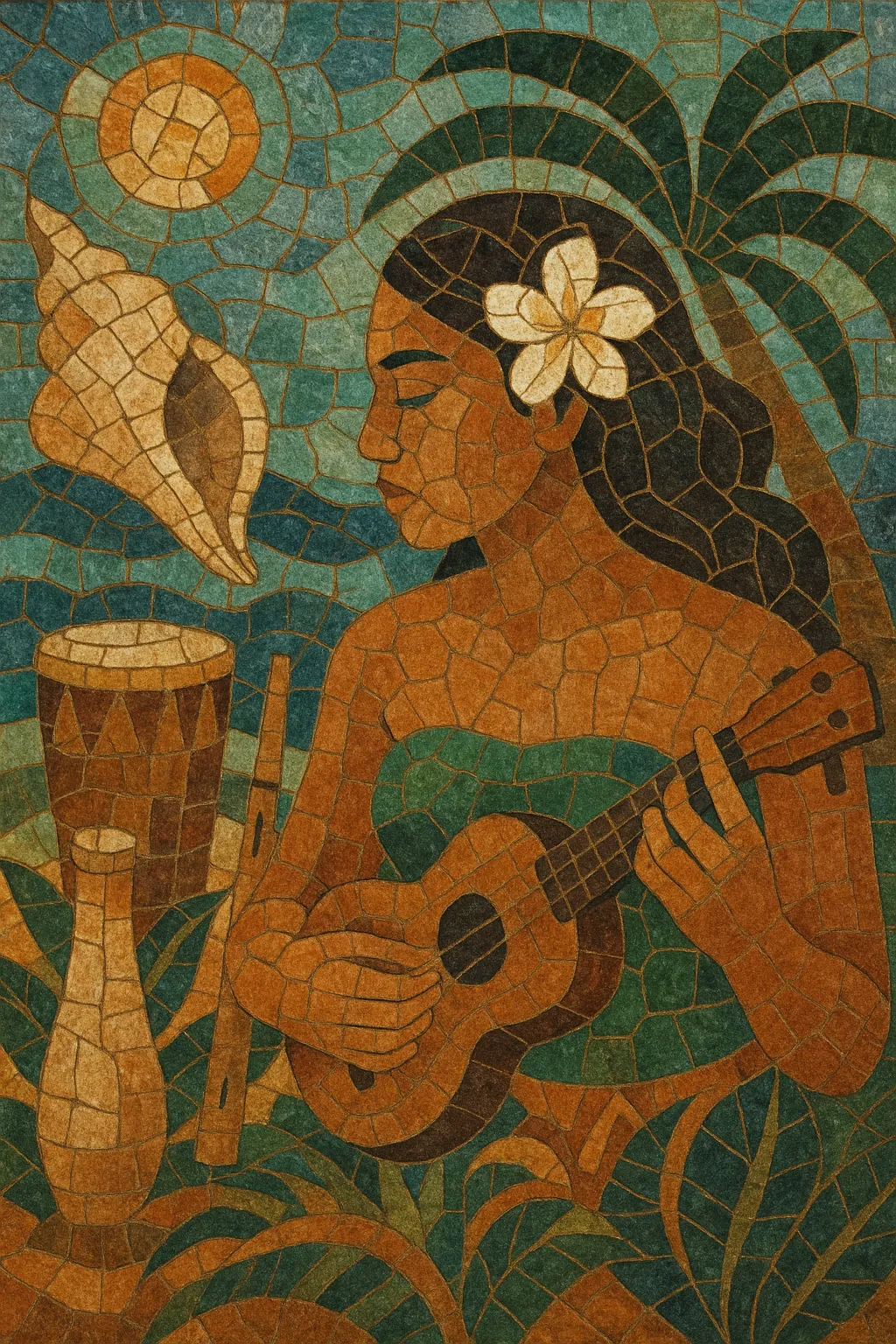Polynesian music refers to the diverse vocal, instrumental, and dance-related musical traditions of the Polynesian Triangle (Hawai‘i, Aotearoa/New Zealand, Samoa, Tonga, Tahiti and the Society Islands, the Cook Islands, Tuvalu, Tokelau, Niue, Rapa Nui, and others).
At its core are chant-based forms (e.g., oli, hīmene, haka/haka taparahi, and imene tuki), powerful group singing with antiphonal call-and-response, and percussion-driven dance accompaniments. Pre-contact soundworlds featured conch shell trumpets (pū), nose flutes (ʻōʻhe hano ihu), slit drums (pātē/toʻere), and skin drums (pahu), while melodies often moved within narrow ranges with speech-like inflections.
From the 19th century onward, congregational hymnody and later guitars, ukulele, and Western harmony blended with Indigenous forms, producing distinctive choral styles (e.g., himene tarava) and modern song traditions that remain tightly integrated with dance (hula, siva, ʻoteʻa). Today, the spectrum spans ancient ceremonial chant through contemporary fusions with pop and reggae, but it consistently centers community, genealogy, place, and dance.
Polynesian music grows from the deep time of Austronesian voyaging and settlement (c. 1000–1300 CE in much of East Polynesia). Music-making was primarily vocal and communal, with chant (e.g., oli in Hawai‘i, haka and waiata in Aotearoa, and varied hīmene across Tahiti and the Cook Islands) accompanying dance, ritual, genealogy recitation, and oratory. Instruments included shell trumpets (pū), nose flutes, jaw harps, slit drums (pātē/toʻere), skin drums (pahu), and idiophones like gourd percussion (ipu). Musical texture tended toward monophony or heterophony, with narrow-range melodies, speech-like contour, and steady percussion ostinati underpinning dance.
From the early 19th century, missionaries introduced Christian hymnody, Western tuning systems, and later tonic sol-fa. Polynesian communities rapidly localized hymn singing—yielding choral styles like himene tarava (Tahiti), imene tuki (Cook Islands), and siva lotu (Samoa)—while retaining Indigenous poetic structures, vocal timbres, staggered entries, and responsorial organization. Guitars and the ʻukulele (developed in Hawai‘i in the late 1800s from Portuguese braguinha/machete prototypes) became widespread, reshaping accompaniment and harmony without displacing Indigenous drums or dance-centered formats.
Recording, radio, and tourism helped project Polynesian sounds globally. Hawaiian ensembles popularized steel guitar, falsetto singing, and hula ʻauana, while Tahitian drumming and ʻoteʻa became emblematic of high-energy spectacle. Māori concert parties, kapa haka, and waiata-ā-ringa developed within cultural renaissance movements. In the later 20th century, urban migration and diasporic communities in Aotearoa, Australia, and the United States fostered new fusions, while cultural festivals standardized ensemble formats and preserved repertories.
Since the late 20th century, there has been vigorous cultural revitalization—renewed interest in kahiko (ancient) chant and hula, haka within kapa haka competitions, and the maintenance of himene traditions. Parallel to this, artists blend Polynesian languages, rhythms, and vocal textures with pop, R&B, and especially Pacific reggae, ensuring the music remains both rooted and contemporarily resonant.
Begin from community-centered vocals and dance integration. Favor group singing, responsive exchanges between a leader and chorus, and text that honors ancestry (genealogies), land, the ocean, and communal events. Keep melodies singable and memorable, often within a modest range, and prioritize rhythm as a driver of movement.


